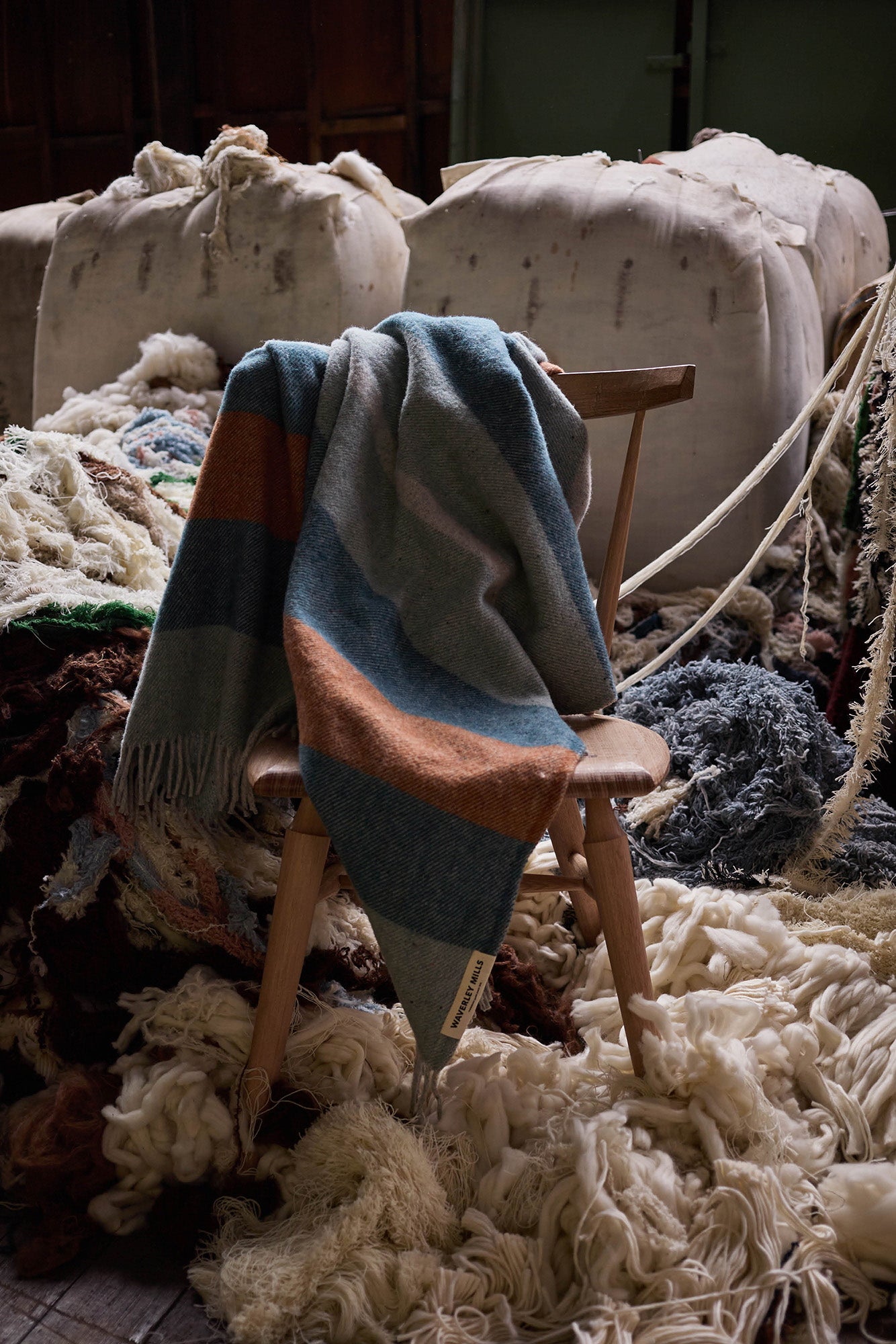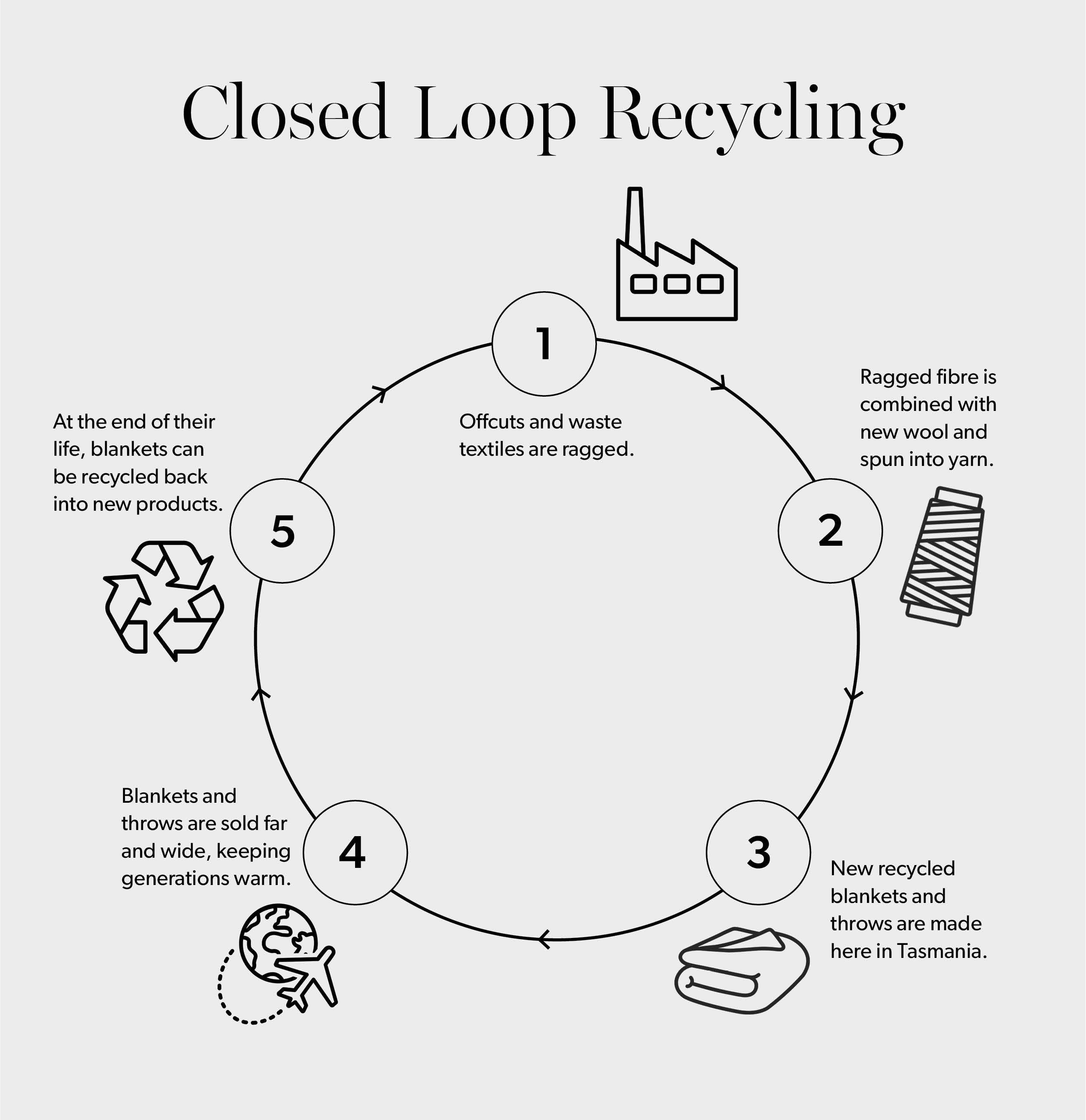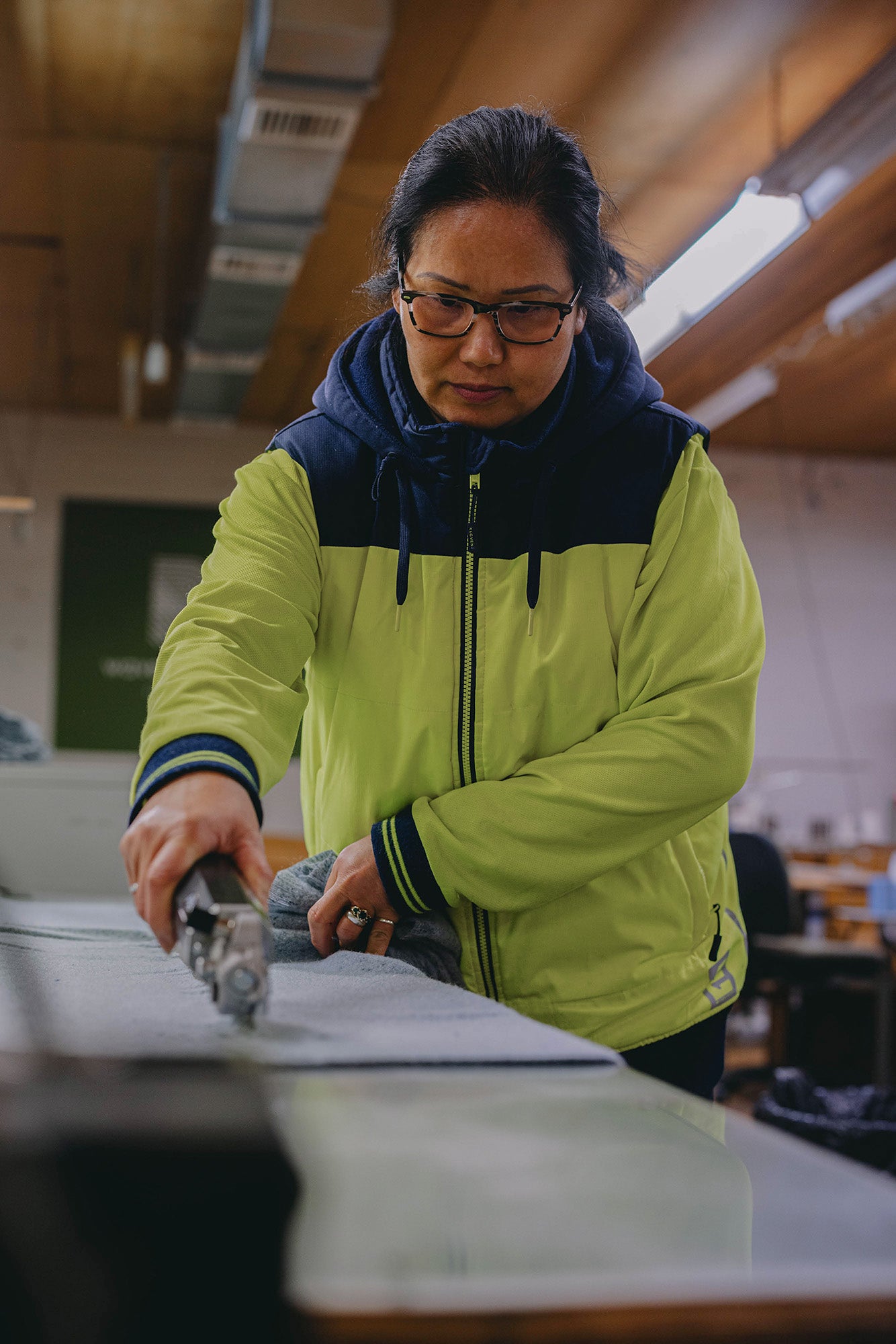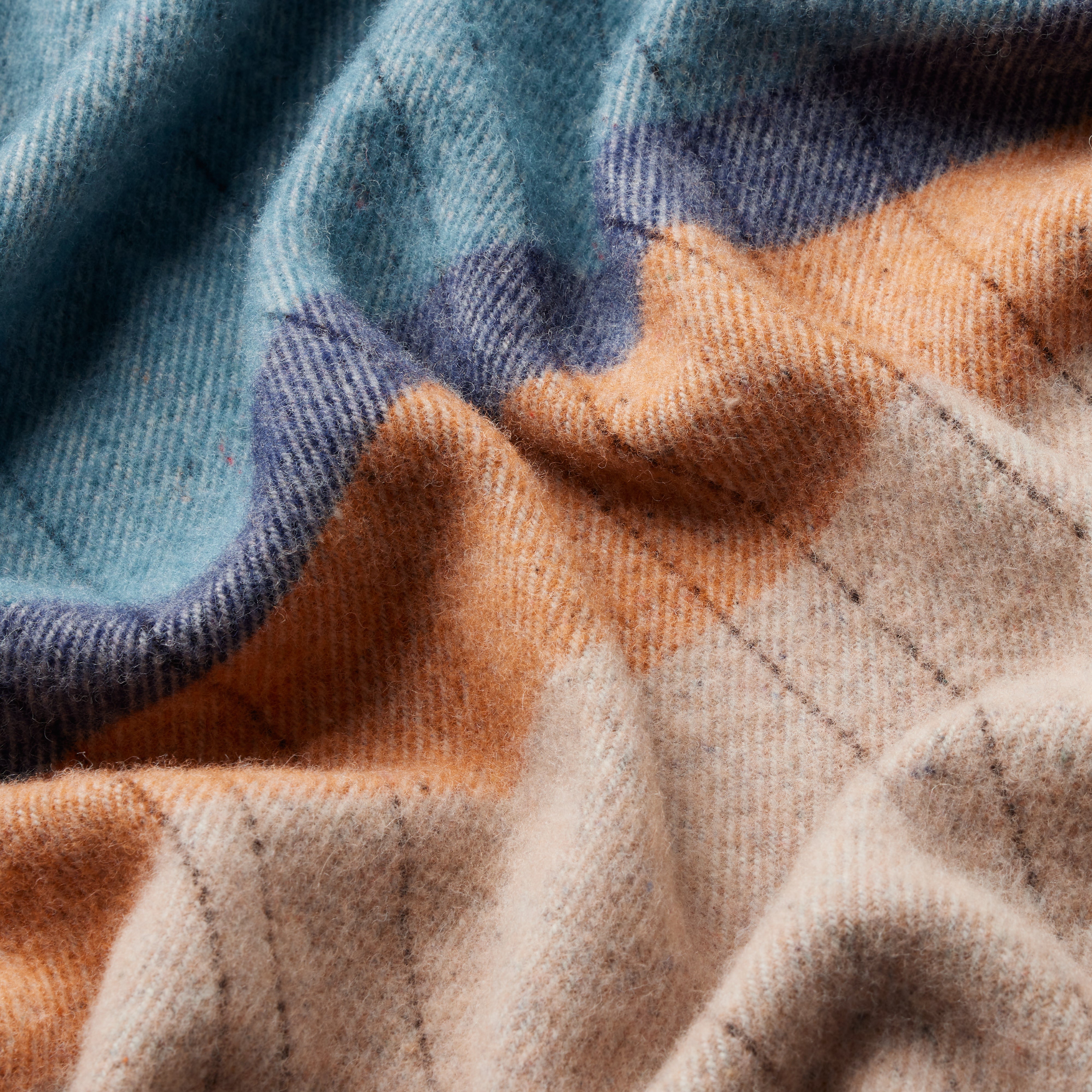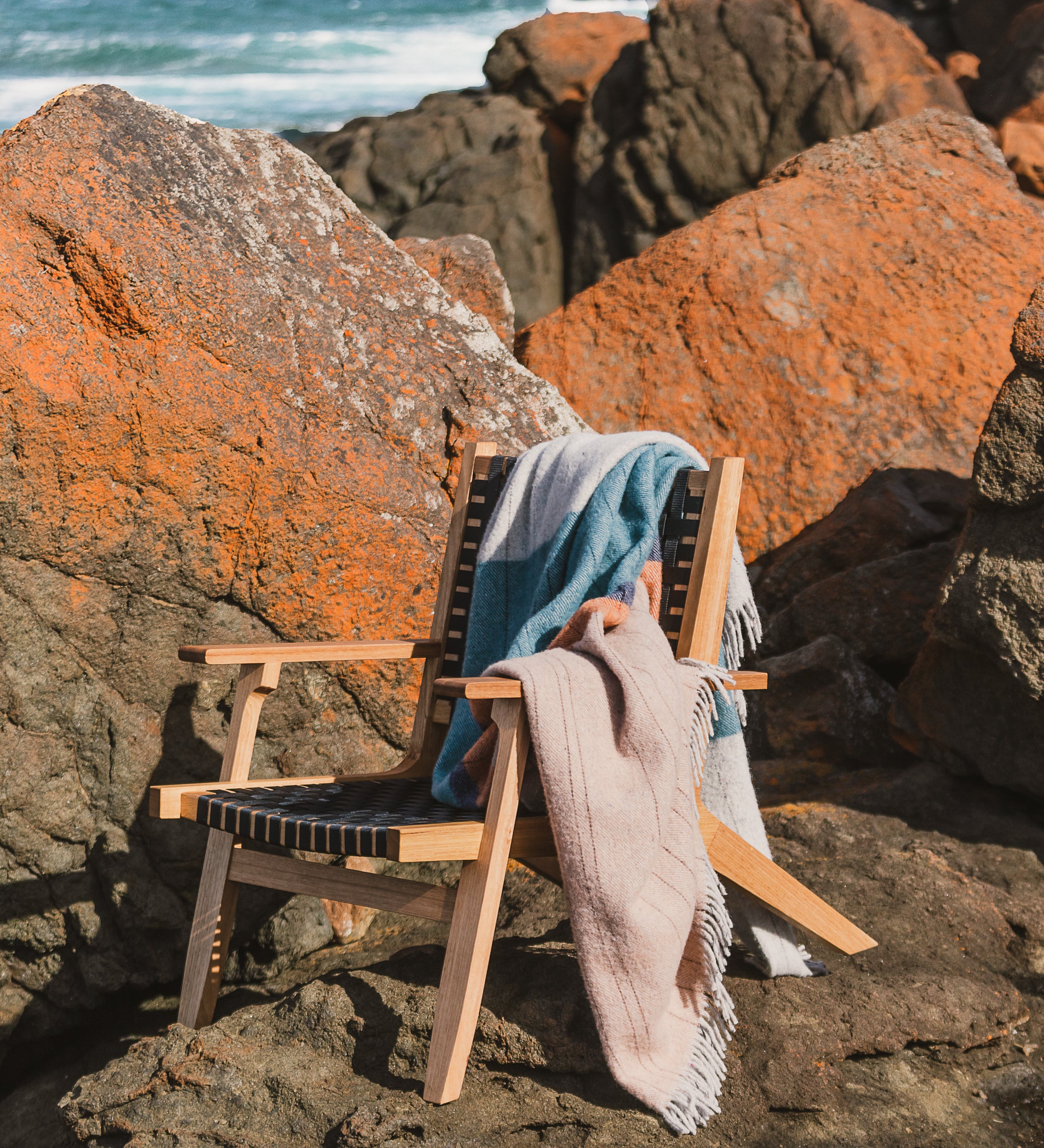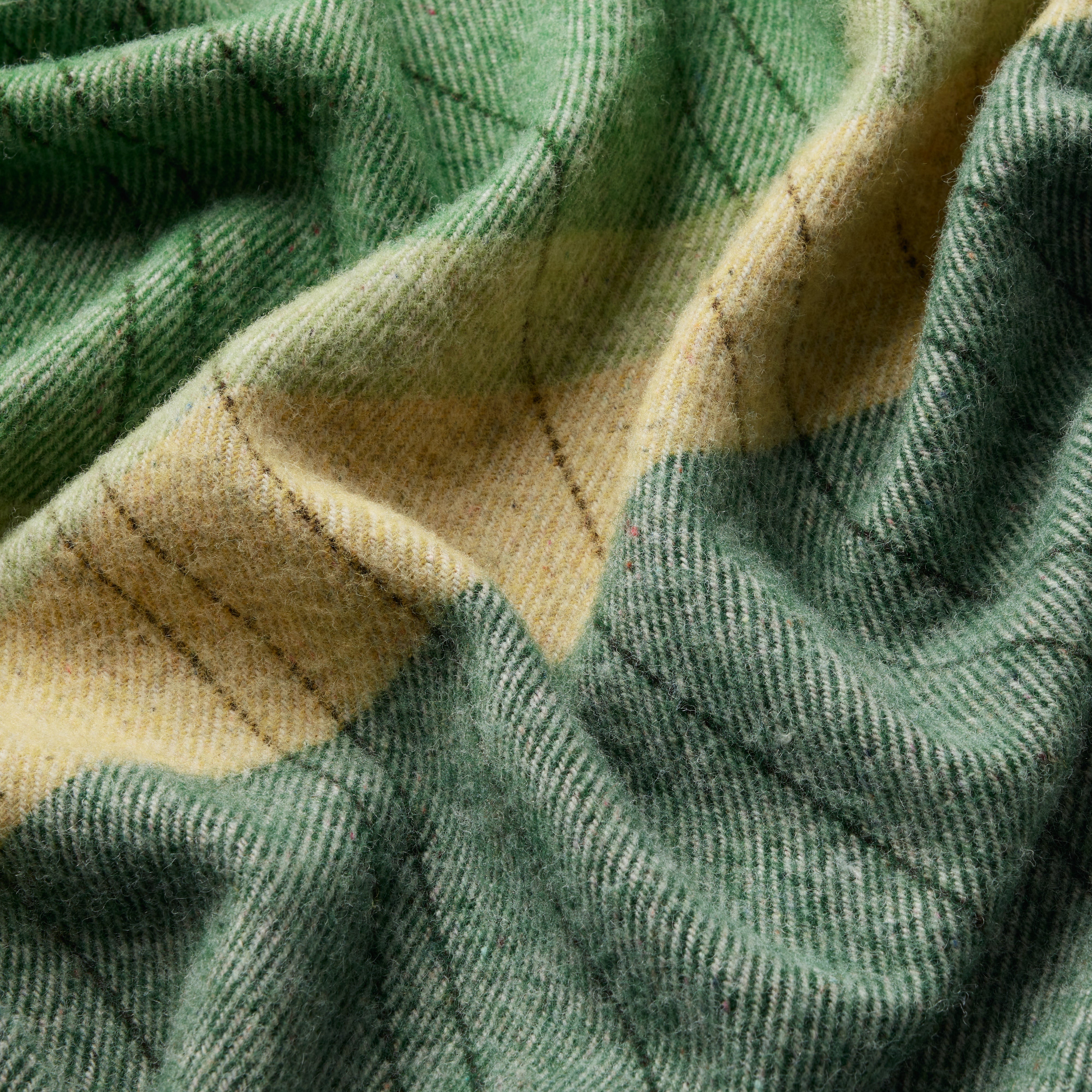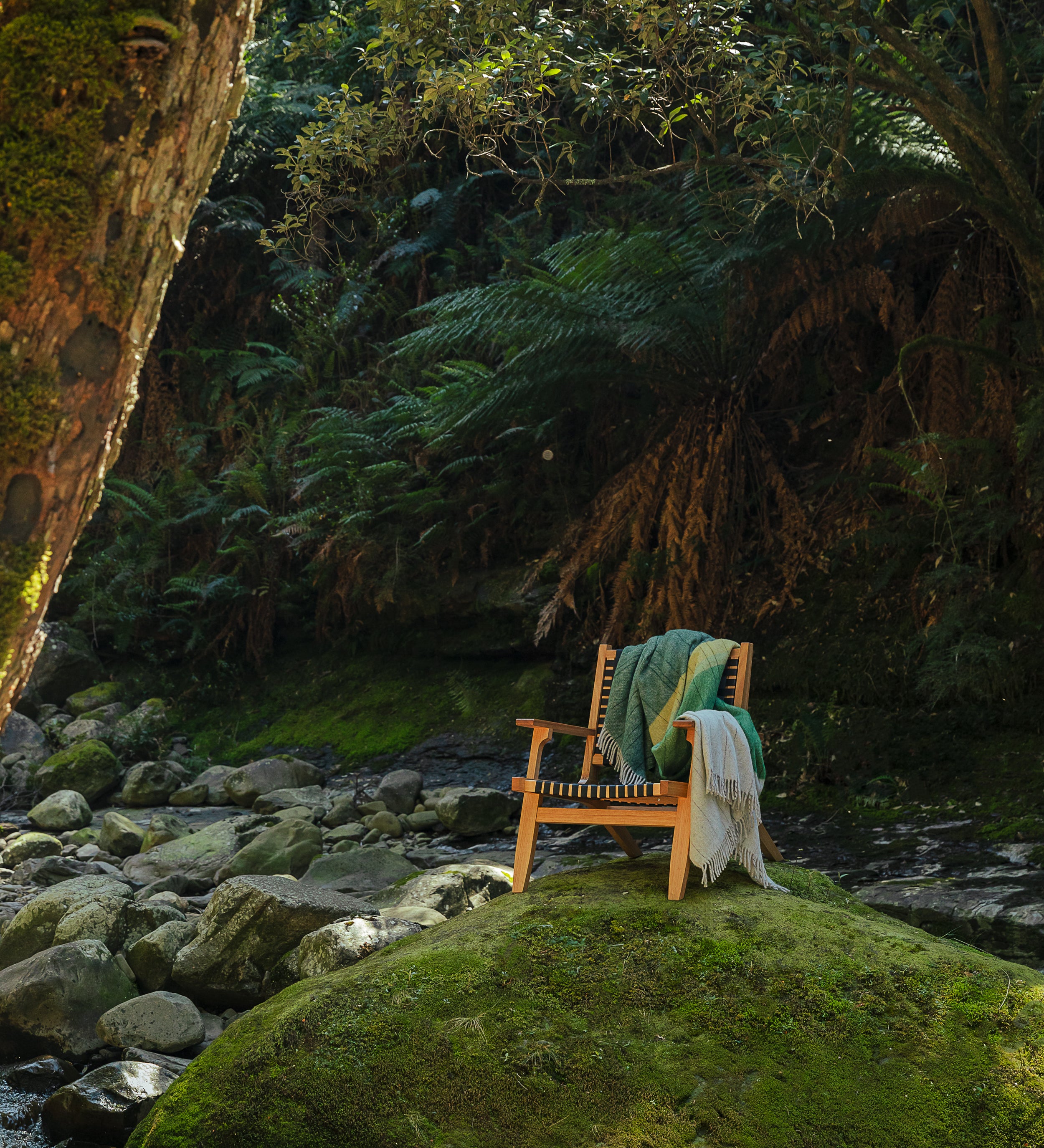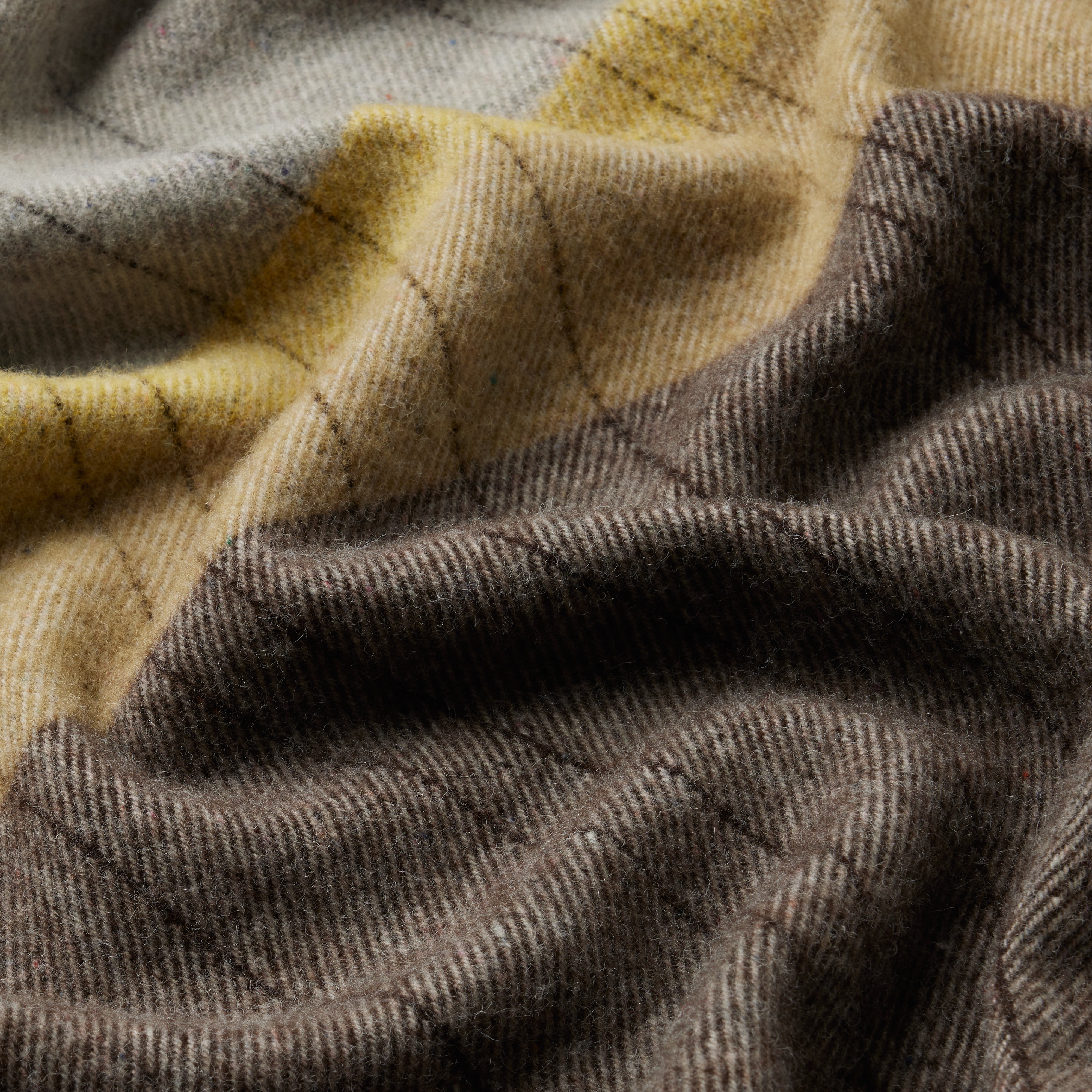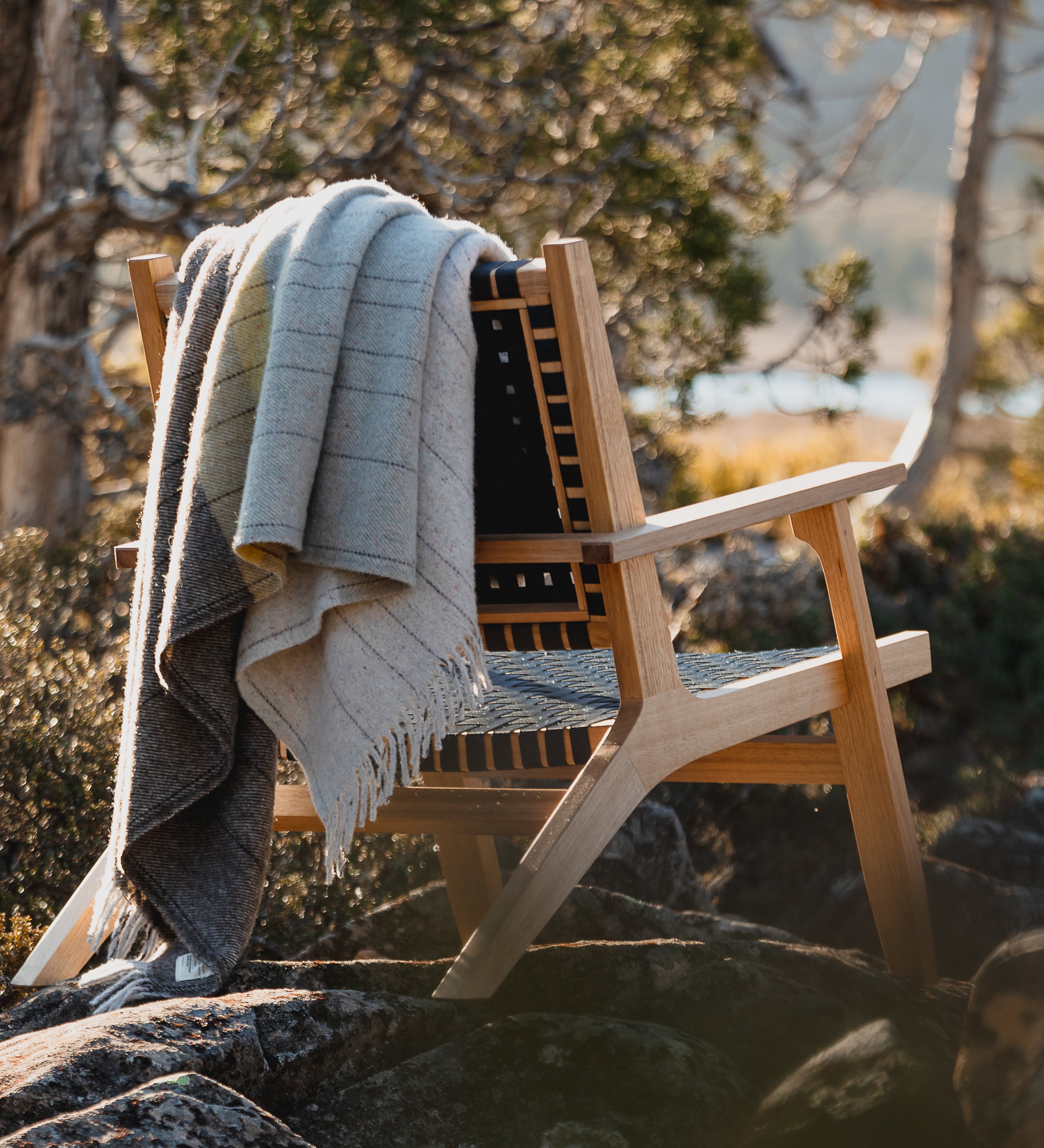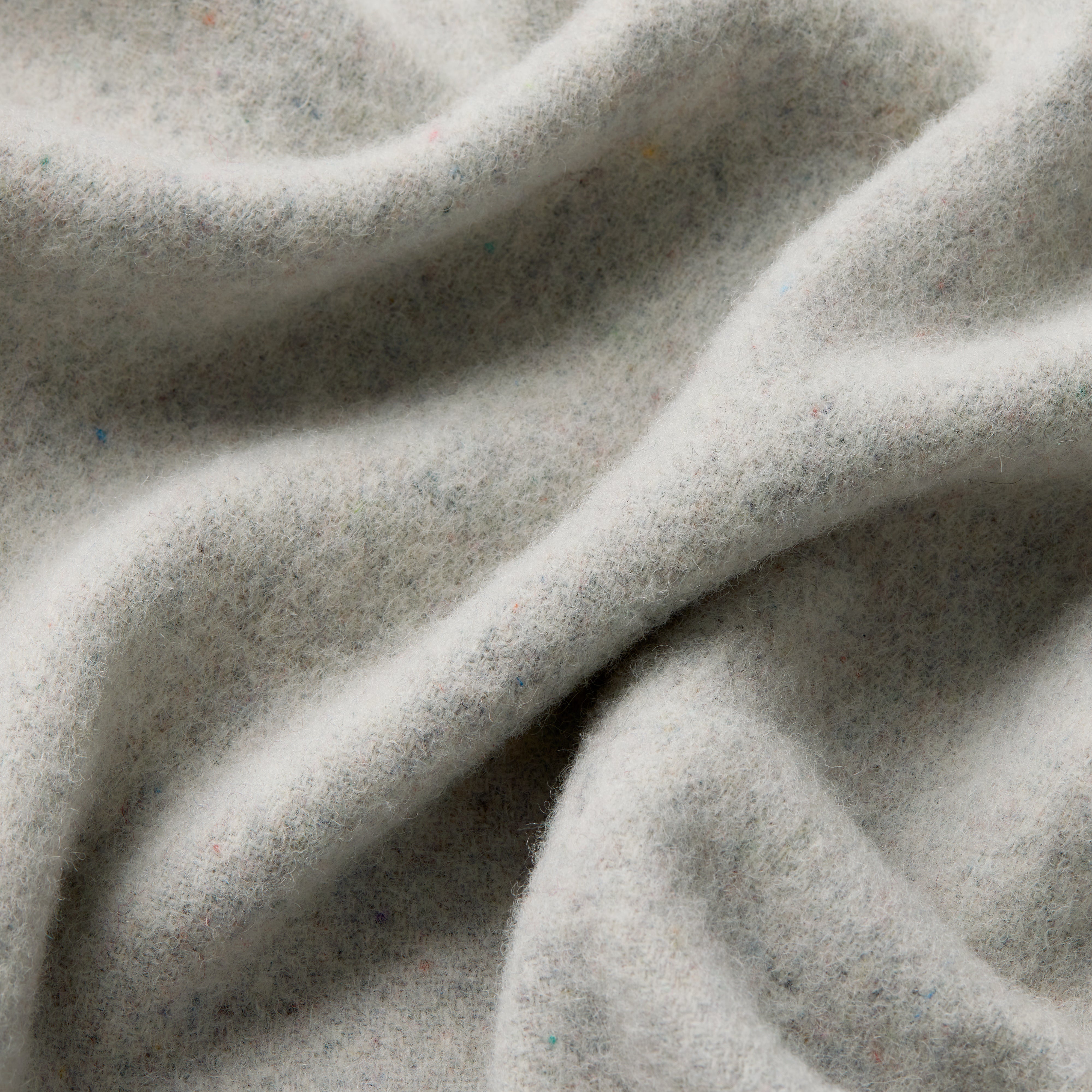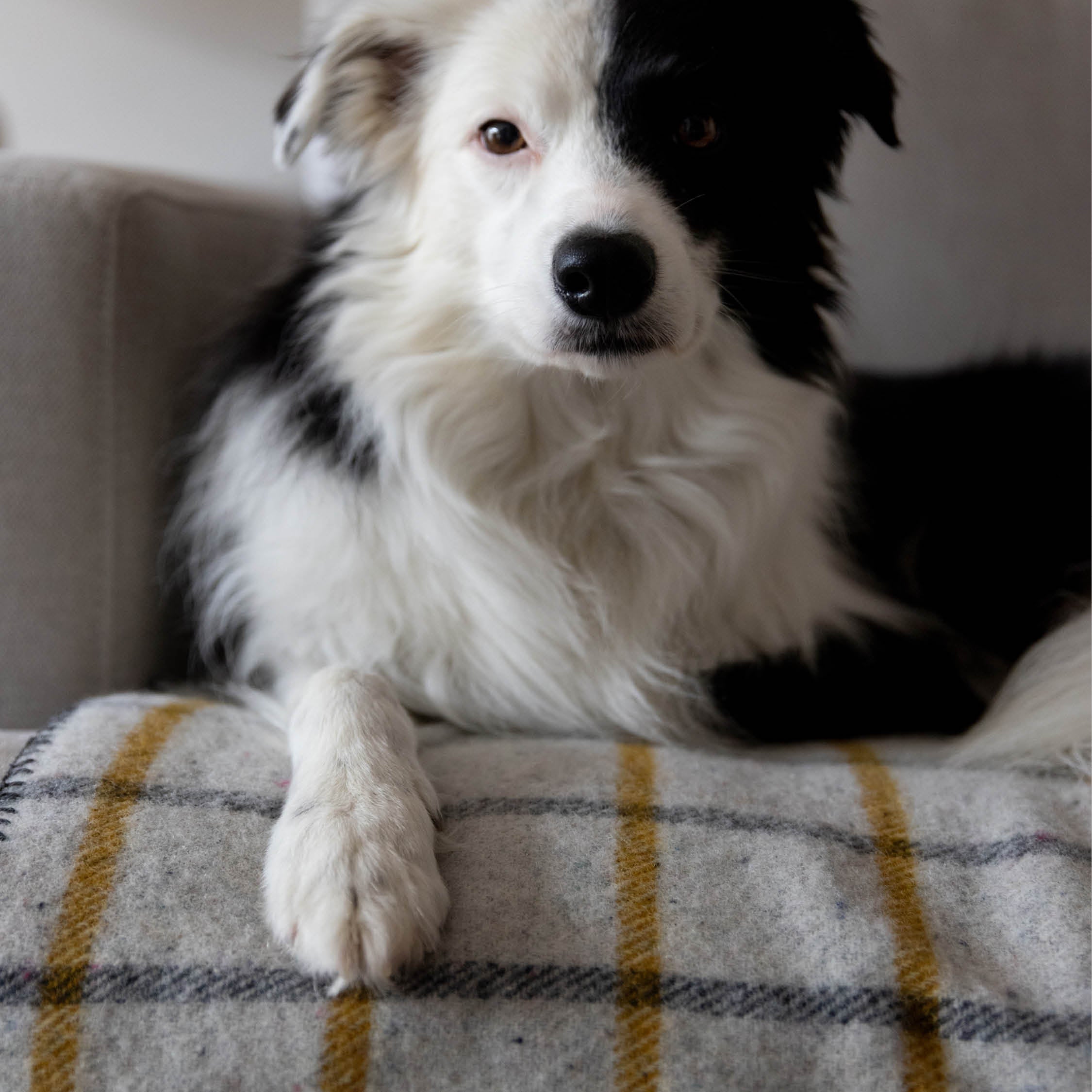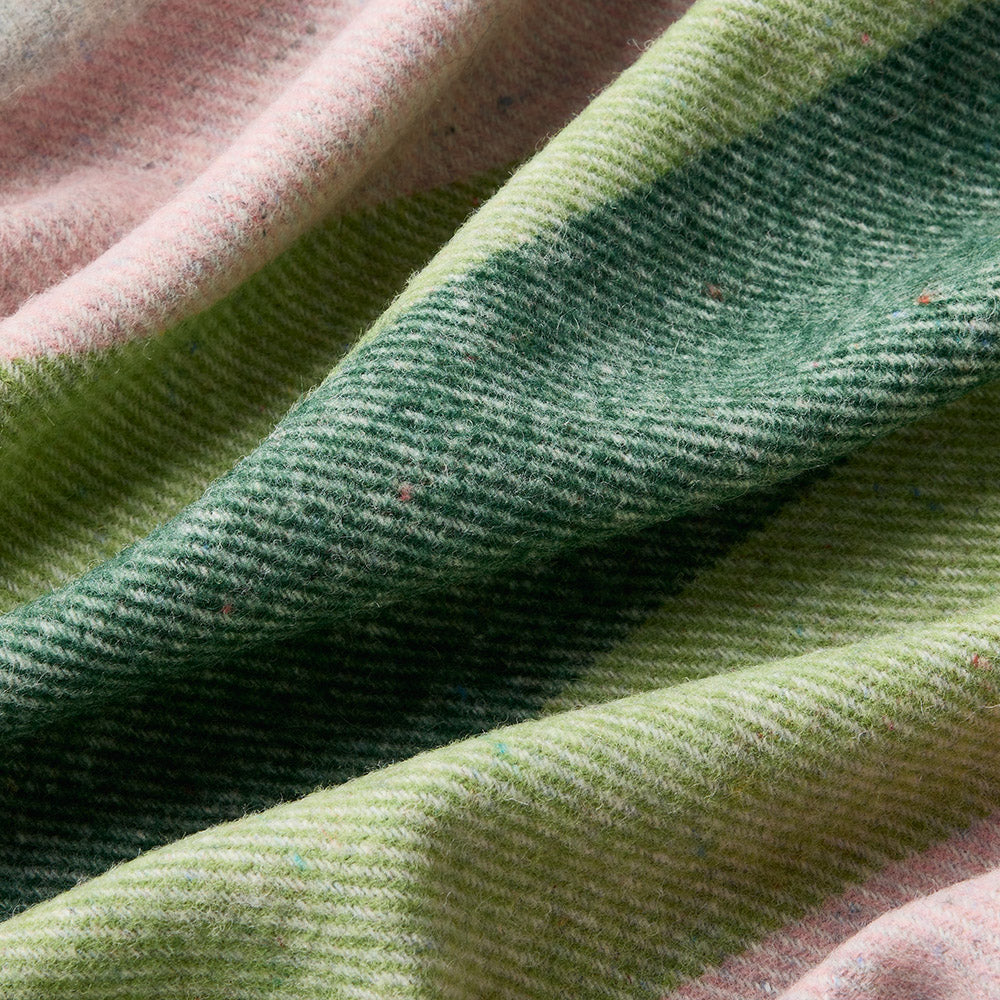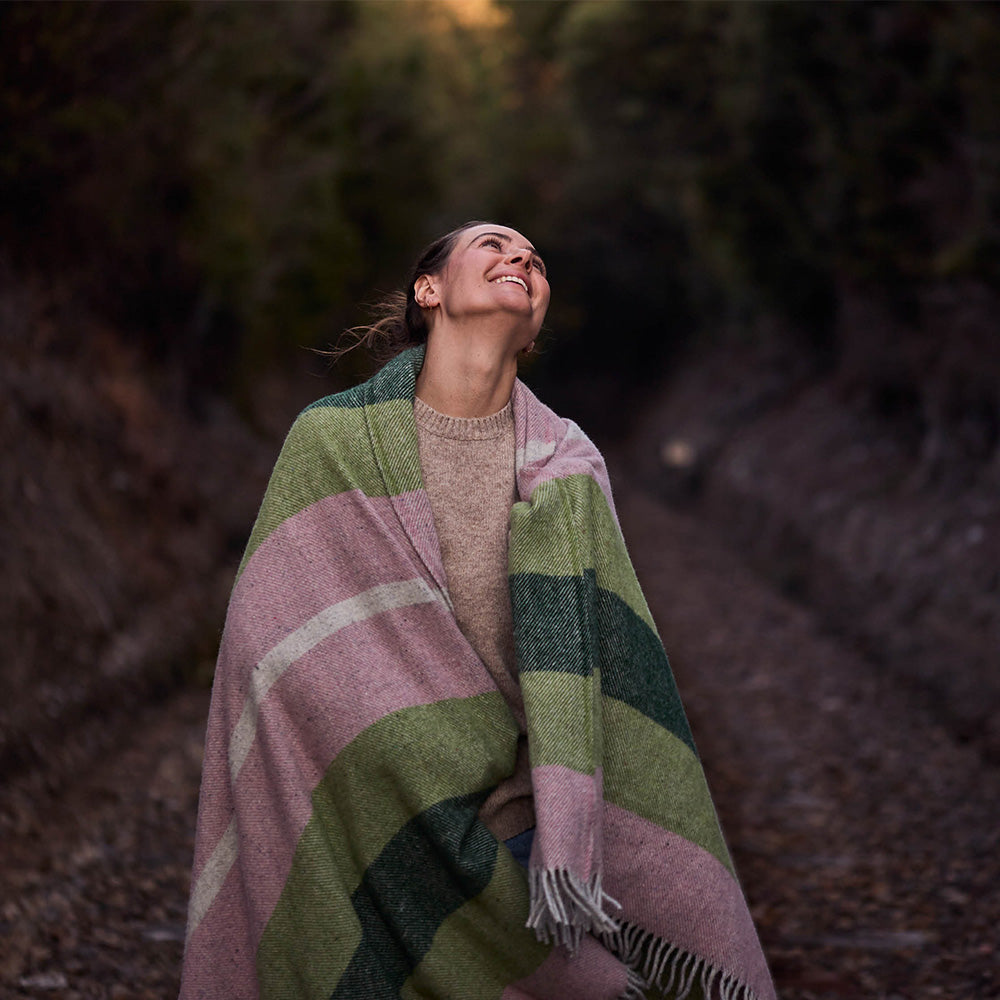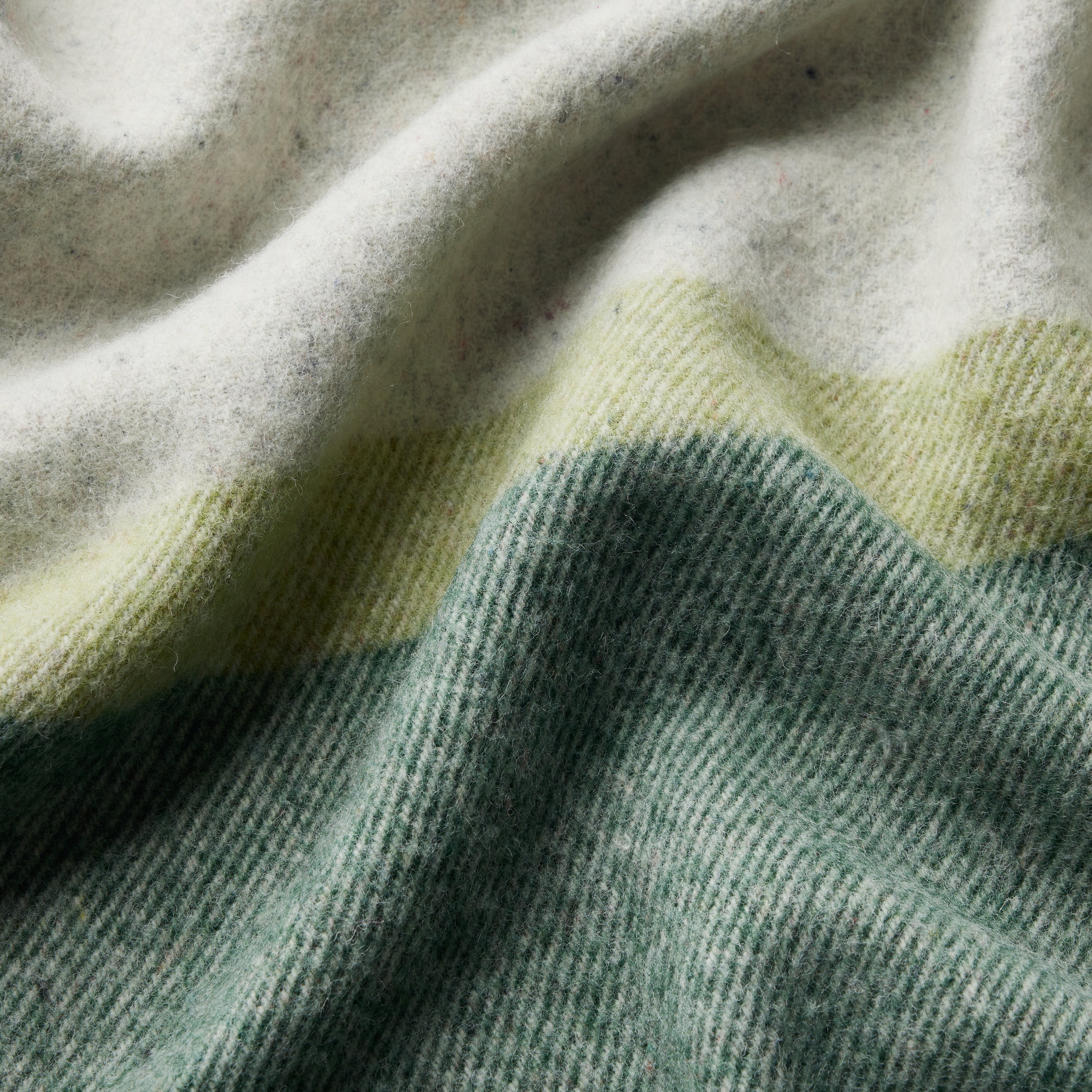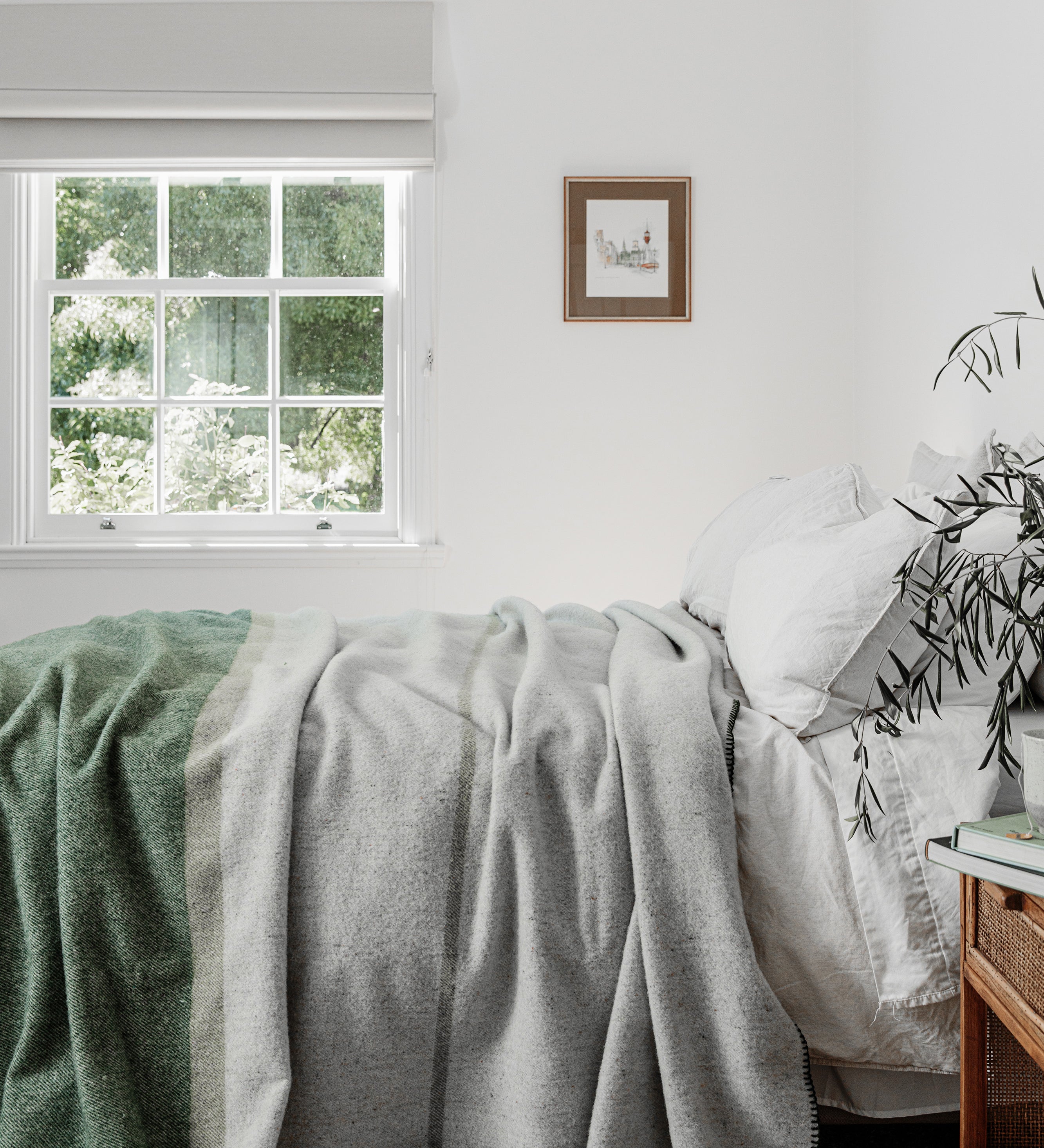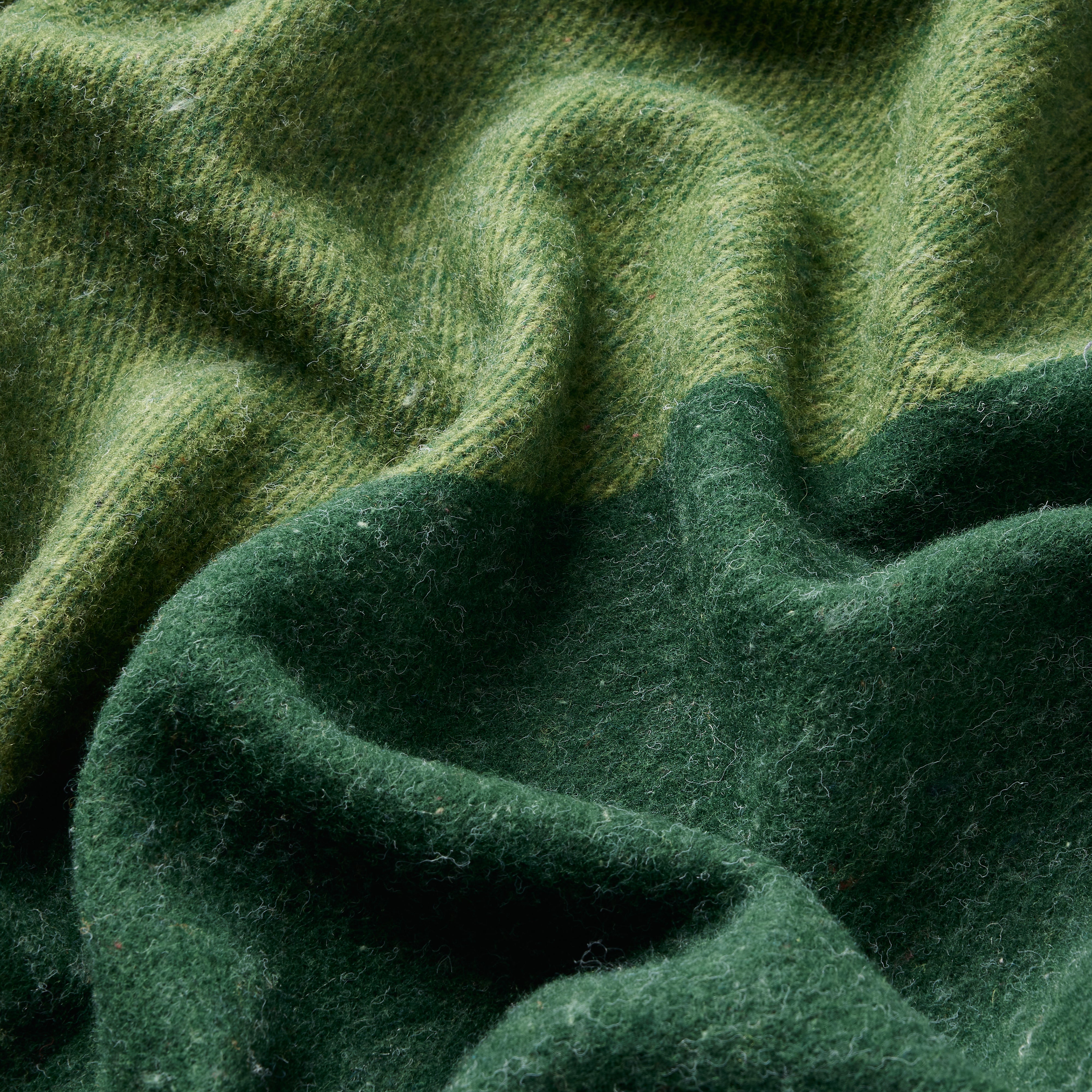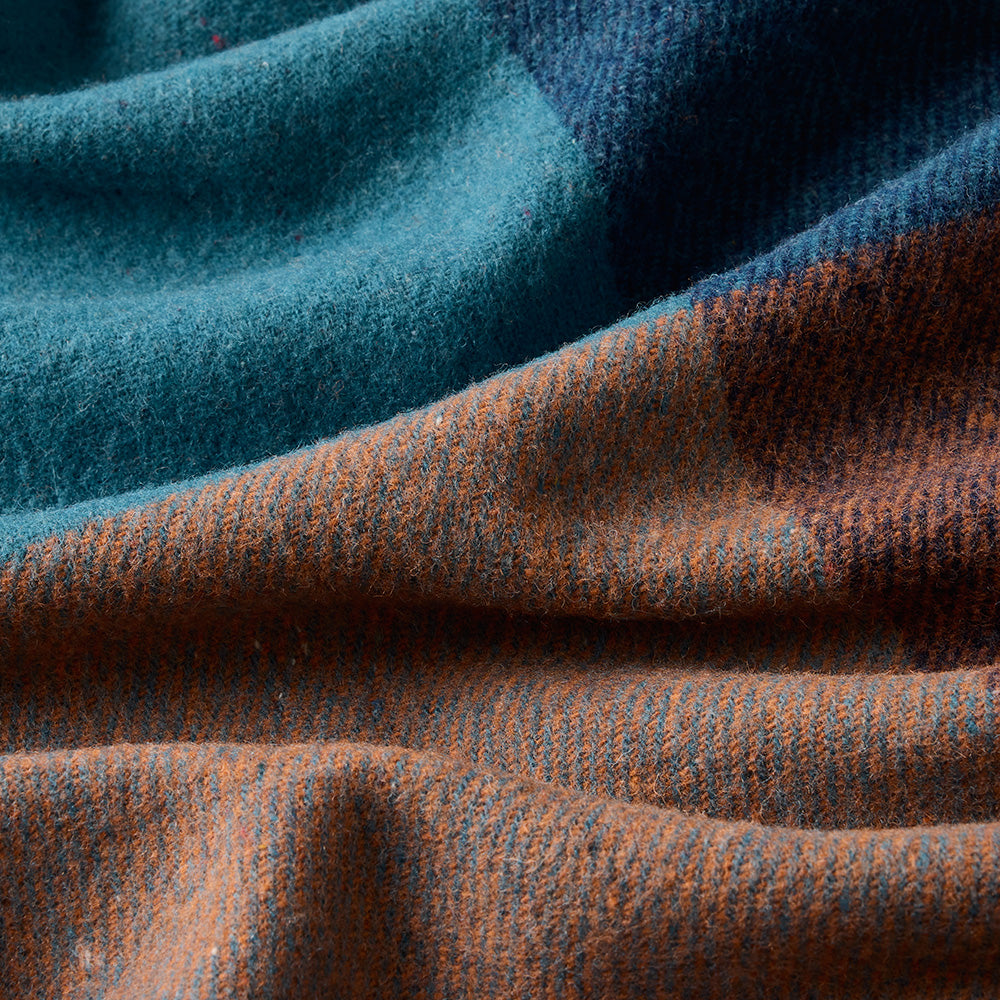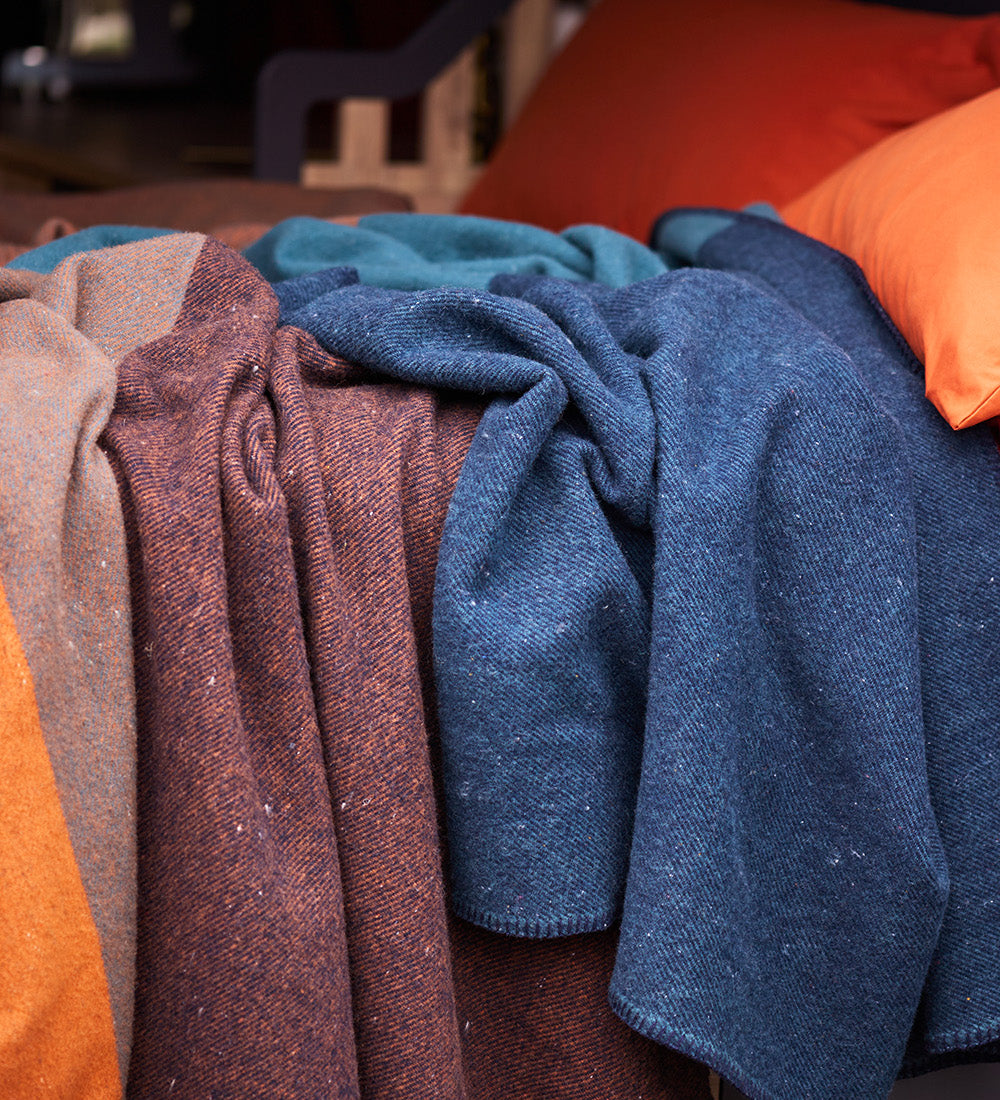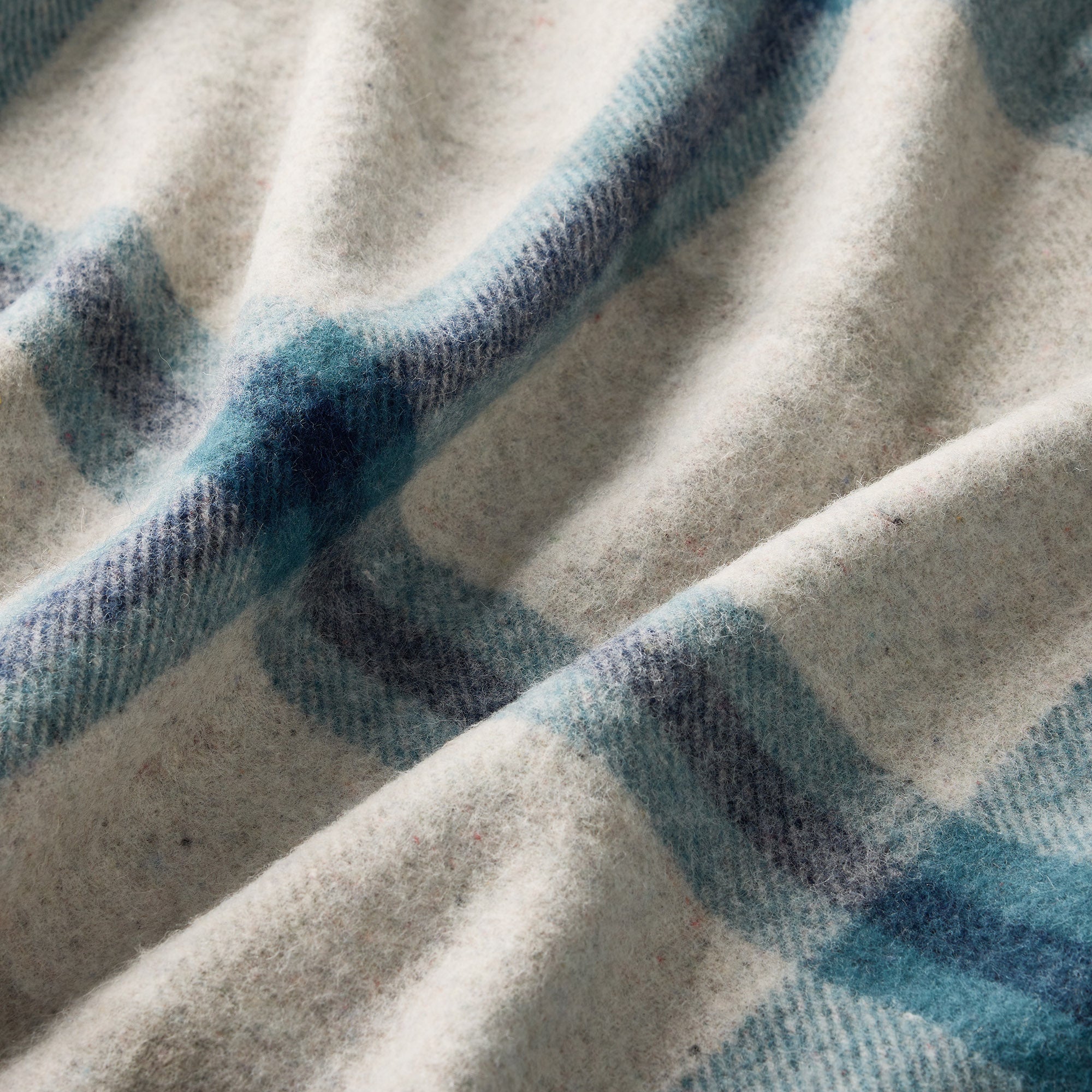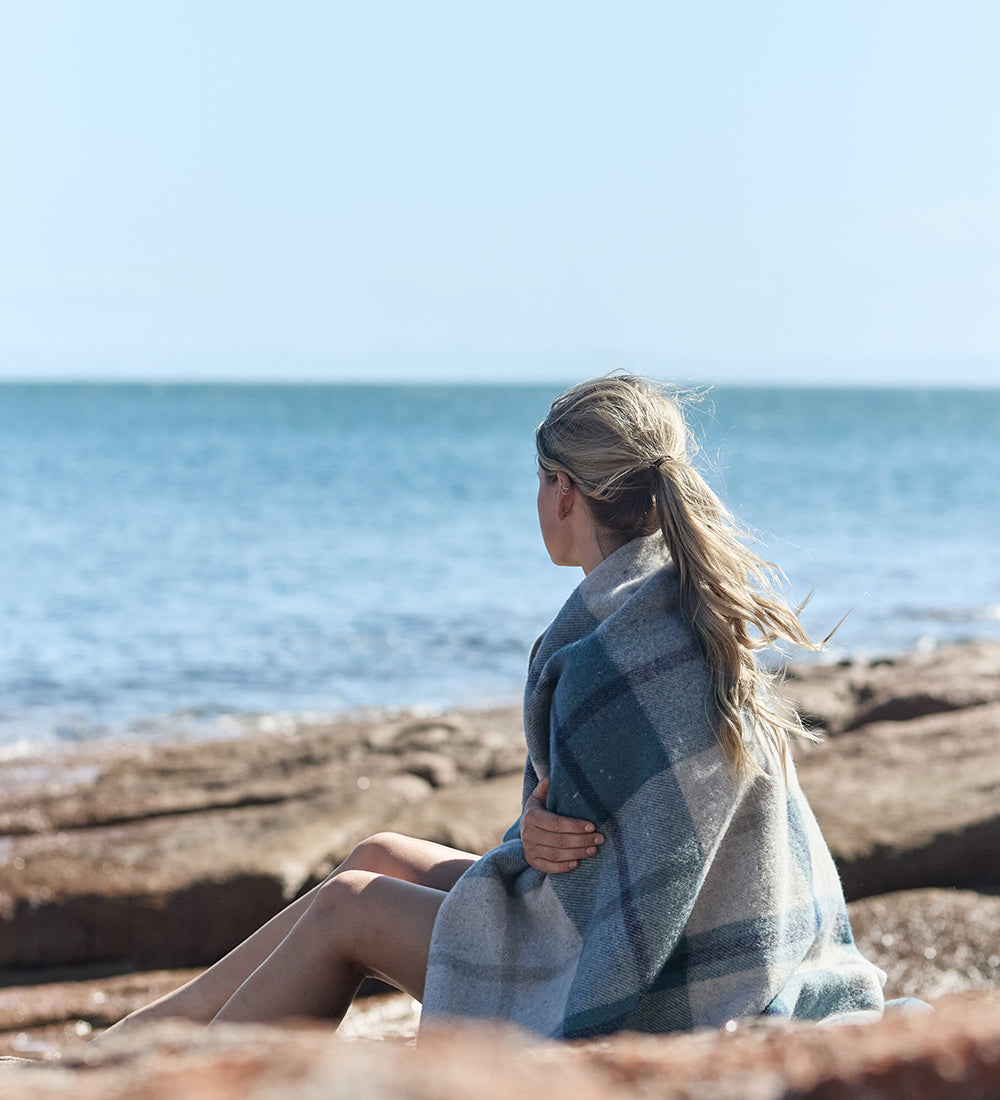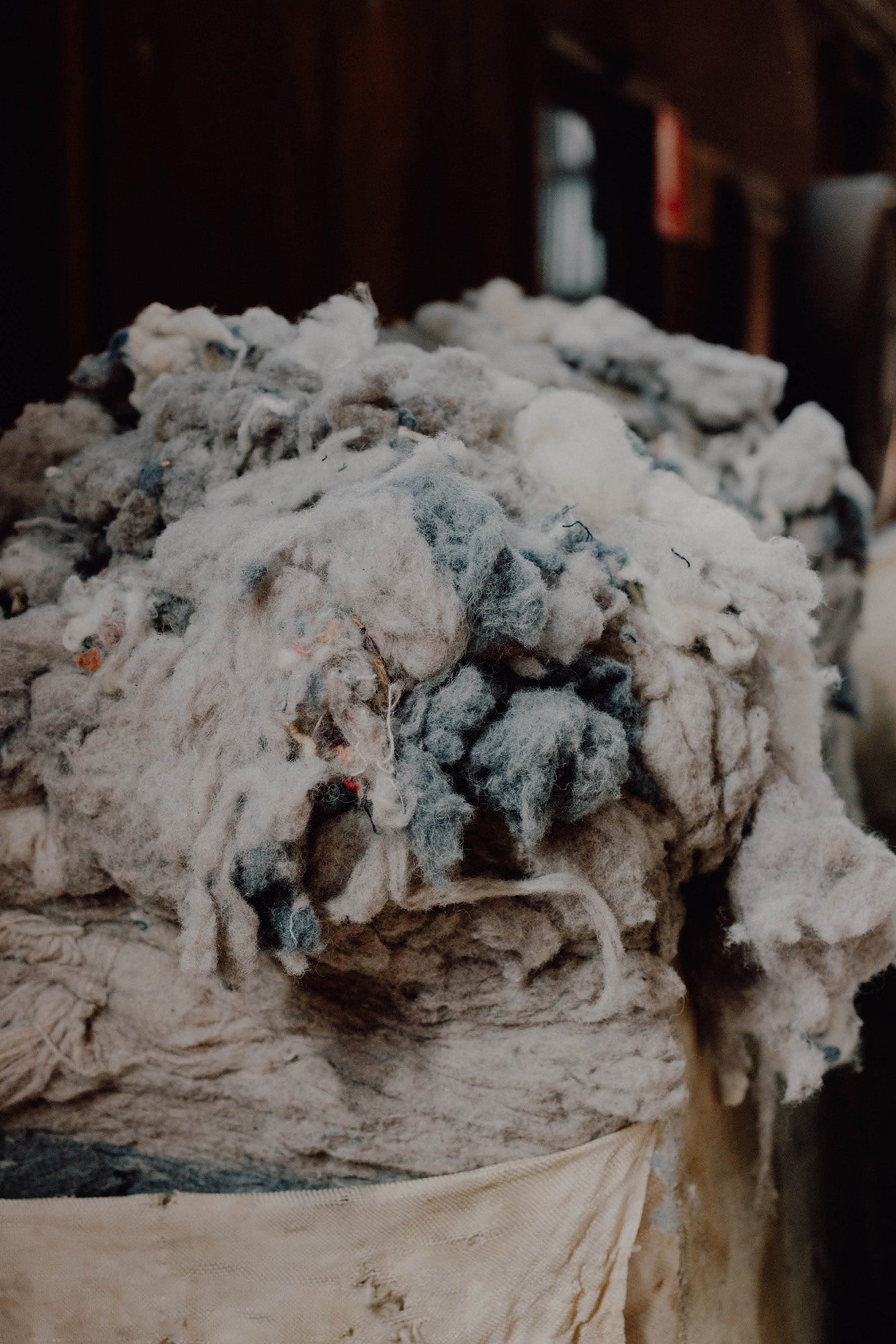
Step One
Ragging & Blending
We are deeply committed to reducing waste and making the most of every fibre. That’s why we collect wool off-cuts and surplus material from our factory floor and collaborating with our partners to collect old or unused textiles, ensuring that nothing goes to waste. These fibres are sent through our ragger—a specialist machine that carefully breaks down woven and spun fabric, transforming it back into a raw, usable state, ready for a new life.
Once processed, this recycled fibre is blended with high-quality new wool and fed into our carding line. Here, the fibres are meticulously aligned and arranged into a delicate web, ensuring even distribution before they are prepared for spinning. This blending process is key to maintaining the strength, softness, and integrity of our final yarn, seamlessly integrating recycled material with fresh wool fibres.
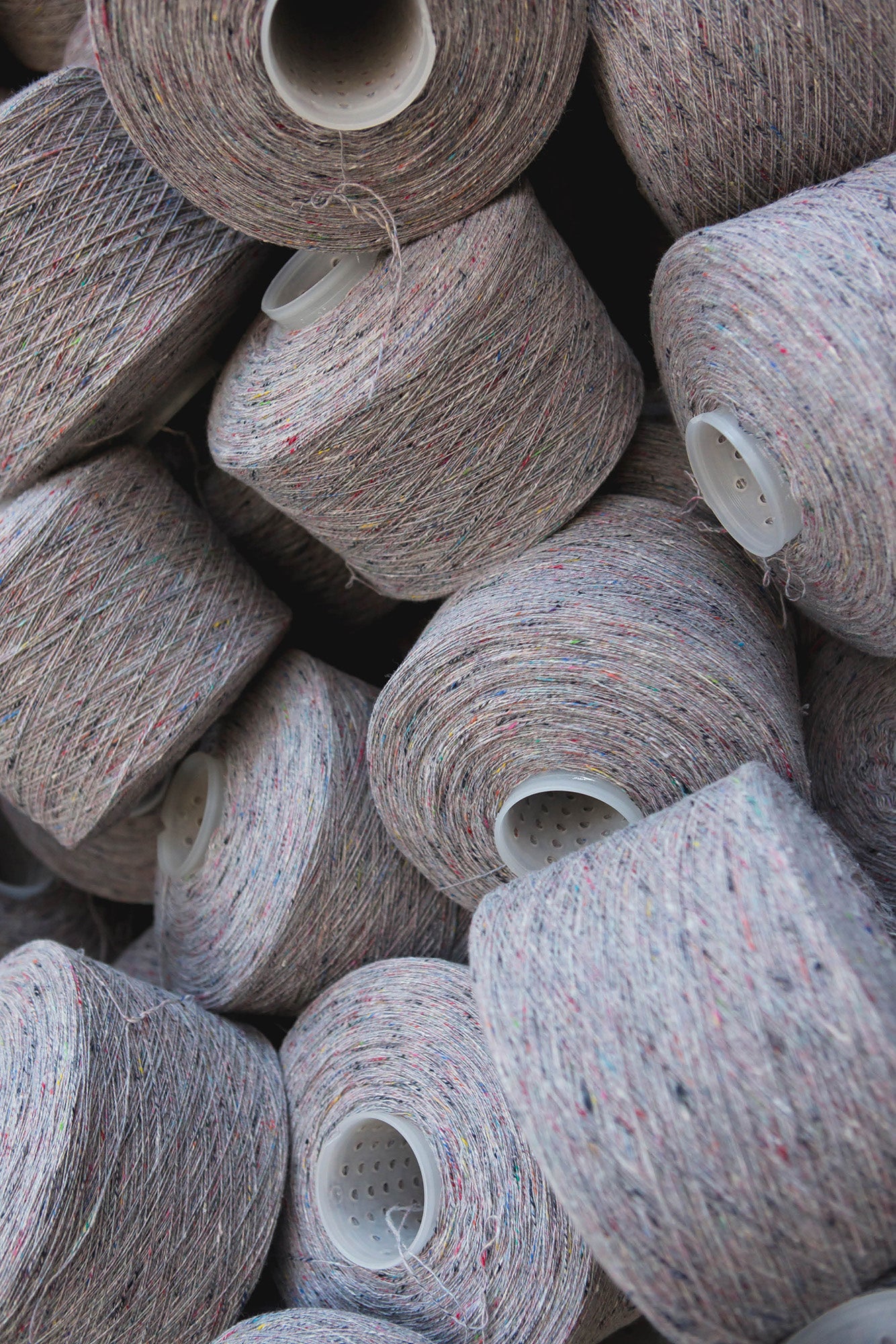
Step Two
Carding & Spinning
At the end of the carding line, the fibres are gently twisted together to create a semi-spun yarn, which is then further refined on our spinning frame. This step enhances the strength and consistency of the yarn, ensuring it meets our exacting standards for weaving. The result is a beautifully balanced woollen yarn—composed of 20% recycled wool fibre and 80% new wool—that retains the warmth, durability, and luxurious softness Waverley Mills is known for.
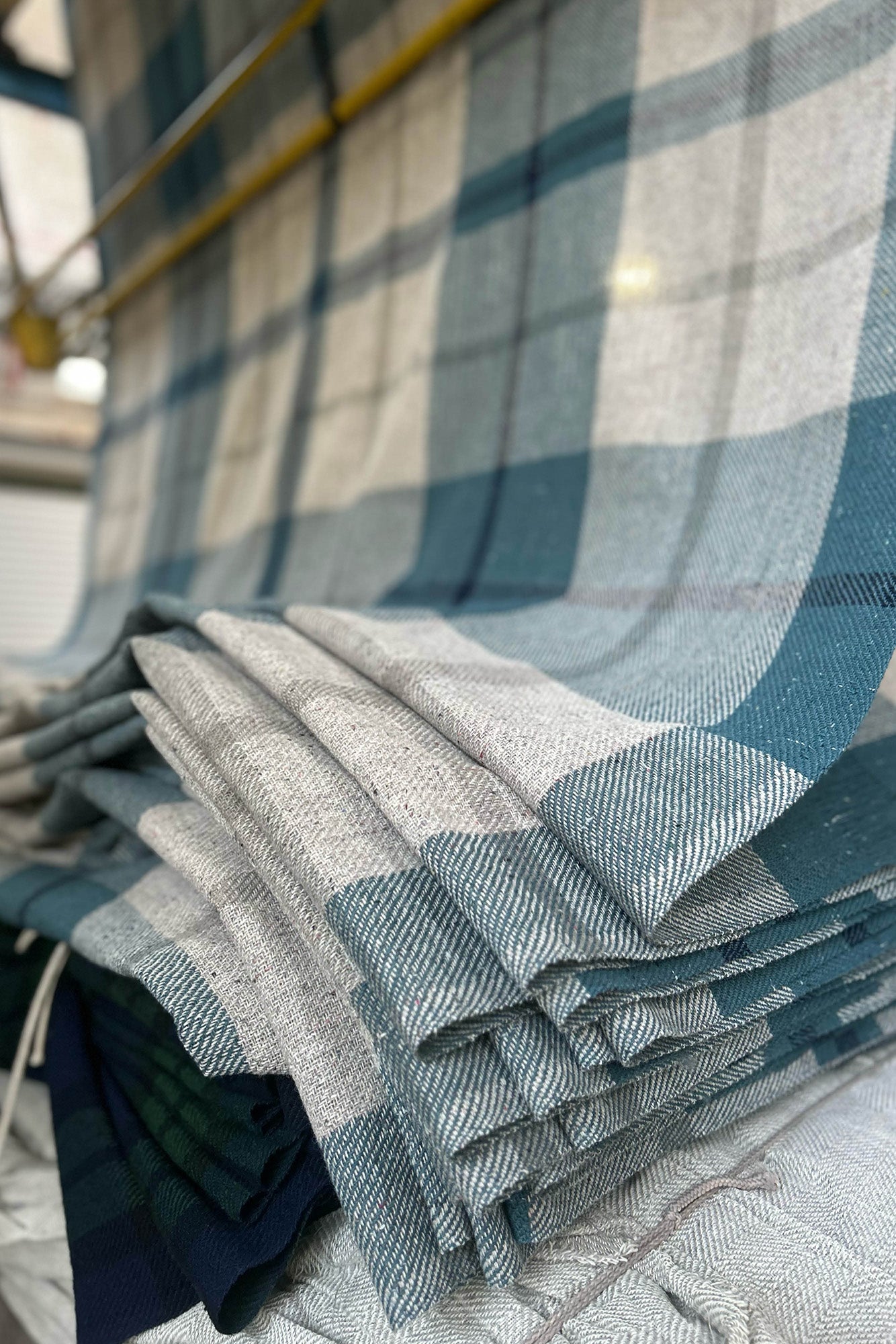
Step Three
Dyeing & Weaving
Once spun, the yarn is dyed where needed, before being woven into our signature recycled range. Every piece then undergoes a meticulous finishing process, including inspection, milling, raising, and final touches that enhance the texture and longevity of the fabric. The result is a stunning, high-quality recycled wool throw or blanket, ready to bring warmth, comfort, and sustainability into your home.
Shop Recycled Wool Bestsellers
Crafted in Tasmania for 150 years

